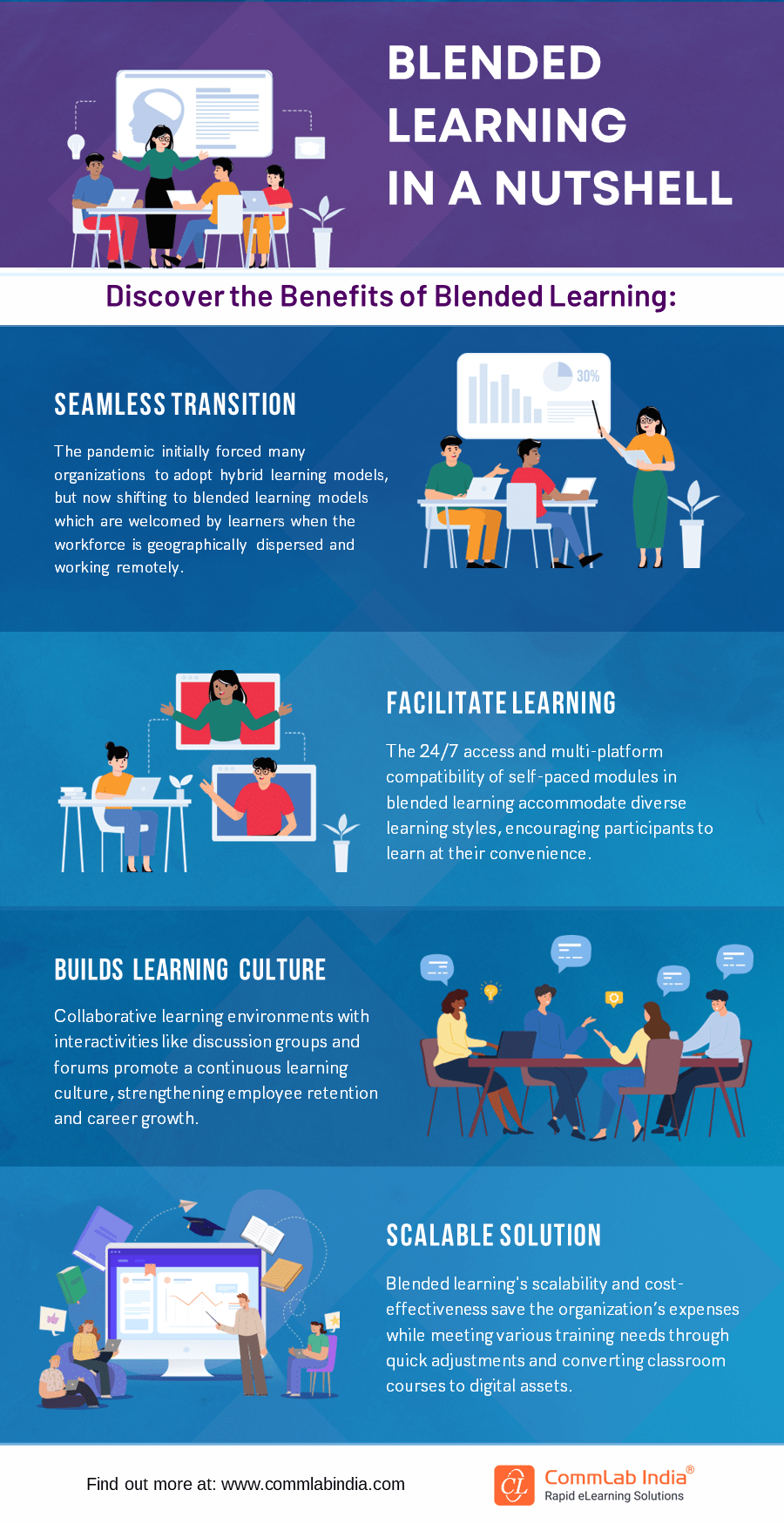Blended Learning for Enhancing Employee Development [Infographic]
![Blended Learning for Enhancing Employee Development [Infographic] Blended Learning for Enhancing Employee Development [Infographic]](https://blog.commlabindia.com/hubfs/Imported_Blog_Media/Blended-Learning-for-Enhancing-Employee-Development.jpg)
Organizations today strive to foster a skilled and adaptable workforce. To meet these goals, organizations are adopting more dynamic and effective approaches. Blended learning has emerged as a revolutionary method that combines the best of both worlds – the flexibility of online learning and the interactivity of face-to-face instruction. In this blog, we will explore the concept of blended learning for corporate training, its benefits, and how it can transform the way organizations nurture employee growth and development.
What is Blended Learning?
Blended learning, often referred to as hybrid learning, is a training approach that combines various learning methods to cater to diverse learning styles and preferences. It combines traditional instructor-led training (ILT) with digital learning, virtual classrooms, video-based learning, simulations, and other digital resources. The goal of blended learning approach is to create a holistic learning experience that maximizes engagement, knowledge retention, and practical application.
Here is an infographic for you with a few of the many benefits provided by blended learning. Discover some amazing benefits provided by blended learning for your learners and your organization.
Blended learning offers many advantages for corporate training, catering to various learning needs. However, the benefits depend on how blended learning is implemented in your organization. Let’s find out!
→ Access Now [Webinar]: Deploy Blended Learning to Flatten the Forgetting Curve
Implementing Blended Learning Successfully
Once the organizations have decided to give a chance to blended learning, its implementation becomes equally important. To effectively implement blended learning for corporate training, organizations can consider the following steps:
- Needs Assessment: Identify specific training needs and learning objectives to design a well-rounded blended learning curriculum.
- Technology Integration: Invest in a user-friendly and robust Learning Management System (LMS) that can host and track various learning materials.
- Content Creation: Develop interactive and engaging content, including videos, quizzes, simulations, and gamified elements.
- Trainer Preparation: Train instructors and facilitators on using digital tools and techniques effectively.
- Continuous Evaluation: Regularly assess the effectiveness of the blended learning program and make necessary improvements based on feedback and performance metrics.
Bottom Line
Incorporating blended learning into corporate training can significantly enhance employee development and foster a culture of continuous learning within organizations. By leveraging the flexibility of online learning and the interactivity of face-to-face instruction, organizations can cater to diverse learning styles, boost engagement, and ultimately drive business success through a skilled and knowledgeable workforce. Embracing blended learning is a strategic step that allows companies to stay ahead in the ever-evolving corporate landscape. Have more questions? Grab our eBook to explore all about blended learning to boost employee performance.





![Top 5 Blended Learning Formats for Software Training [Infographic]](https://blog.commlabindia.com/hubfs/blogs/Top%205%20Blended%20Learning%20Formats%20for%20Software%20Training.jpg)

